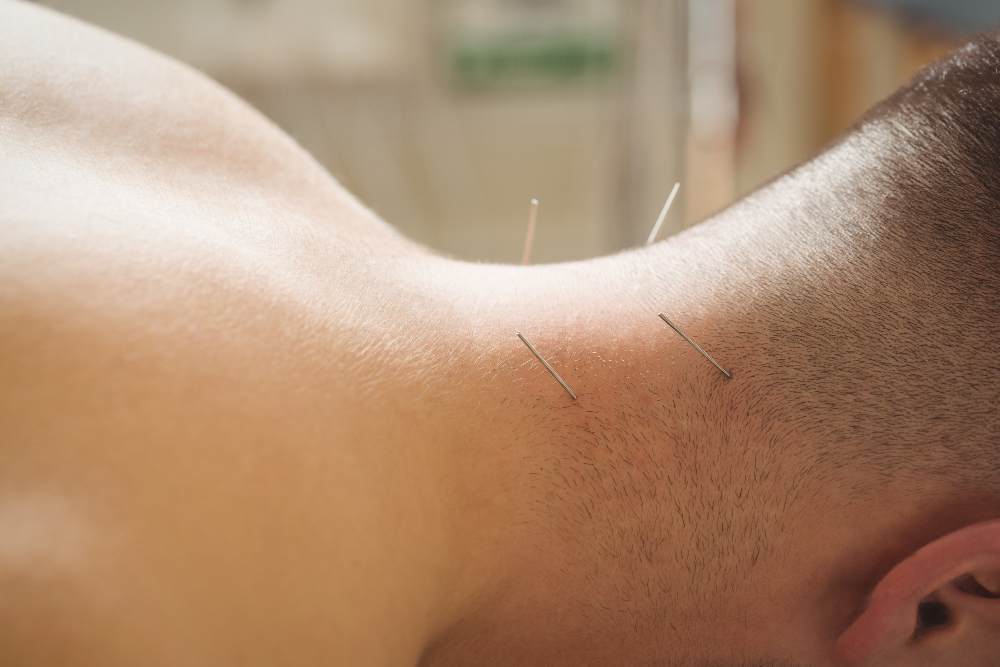As a licensed practitioner of Traditional Chinese Medicine (TCM), I have dedicated my career to helping patients manage chronic pain through holistic, evidence-based approaches. In an era where overreliance on medications has led to widespread dependency, I believe acupuncture offers a safe, natural, and effective alternative rooted in centuries of TCM wisdom. Let’s explore how this ancient practice can address pain at its source—without the risks of addiction.
Understanding Acupuncture Through the Lens of TCM
Acupuncture is a cornerstone of Traditional Chinese Medicine, grounded in the belief that health stems from the harmonious flow of Qi (vital energy) through the body’s meridians. As a TCM doctor, I use ultra-fine needles to stimulate specific acupuncture points, restoring balance to blocked or imbalanced energy pathways. Modern research has begun to validate this ancient framework, showing that acupuncture activates neurological and biochemical responses that reduce pain, ease inflammation, and promote healing.

How My Approach to Acupuncture Works
In my practice, I focus on three core principles:
- Restoring Qi Balance: By targeting precise points along meridians, I help patients regain energy flow, addressing not just symptoms but the root causes of pain.
- Neurological Harmony: Acupuncture stimulates the release of endorphins and neurotransmitters like serotonin, which naturally alleviate pain and improve mood—a process I’ve witnessed transform countless patients’ lives.
- Holistic Healing: Unlike temporary painkillers, acupuncture supports long-term wellness by reducing inflammation, improving circulation, and strengthening the body’s self-healing mechanisms.
Why I Recommend Acupuncture for Pain Relief: Science and Experience
While TCM philosophies guide my practice, I also value modern scientific validation. A landmark study published in the Archives of Internal Medicine (2012), analyzing data from 18,000 patients, found acupuncture outperformed placebo treatments for chronic pain. This aligns with what I see daily in my clinic: patients with back pain, migraines, arthritis, and fibromyalgia experience significant relief through personalized acupuncture plans.
A Natural Alternative to Opioids
The opioid crisis has made one thing clear: we need safer solutions for pain. In my practice, I prioritize acupuncture as a non-addictive therapy that reduces reliance on medications. For example, the same NIH-supported study highlighted acupuncture’s role in offering measurable relief for millions suffering from musculoskeletal pain—a trend I actively support through patient education and tailored treatment plans.
Conditions I Treat with Acupuncture
While every patient’s needs are unique, I’ve seen remarkable results in managing:
- Chronic Back/Neck Pain: Over 70% of my patients report improved mobility and reduced discomfort within 4–6 sessions.
- Migraines & Headaches: Regular acupuncture can reduce frequency and severity by balancing triggers like stress and poor circulation.
- Osteoarthritis: By enhancing joint fluid circulation, acupuncture alleviates stiffness and inflammation.
- Fibromyalgia: This complex condition responds well to acupuncture’s dual focus on pain relief and stress reduction.
Integrating Acupuncture into Your Wellness Journey
As a TCM practitioner, I advocate for combining acupuncture with complementary therapies, such as herbal medicine, cupping, or lifestyle adjustments. For instance, pairing acupuncture with gentle exercises like Tai Chi, Qi Gong, or Yoga with breathing exercises can amplify results — a strategy I often recommend for long-term musculoskeletal health.
Supporting Accessibility
I’m encouraged to see growing recognition of acupuncture in mainstream healthcare. Many insurance plans now cover treatments for chronic pain, and Medicare’s inclusion of acupuncture for lower back pain reflects its widening acceptance.
Choosing Safe, Effective Acupuncture Care
When seeking treatment, ensure your acupuncturist is licensed (for instance, in the UK, they are registered with ATCM or BAcC) and well-trained with either a TCM or Western acupuncture background. In my clinic, I adhere to strict hygiene protocols and customize each session to the patient’s constitution, ensuring both safety and efficacy.
Final Thoughts: Bridging Ancient Wisdom and Modern Needs
In 12 years of practice, I’ve seen acupuncture empower patients to reclaim their lives from chronic pain. By merging TCM’s holistic principles with evidence-based strategies, this ancient art remains as relevant today as ever. If you’re tired of temporary fixes or wary of medication risks, I invite you to explore acupuncture—a natural path to lasting relief.
Take the Next Step
If you’re in Manchester area and Stockport area and seeking a natural approach to pain management, I’d be honored to guide you. Schedule a consultation at my clinic to discuss a personalized acupuncture plan, or share this article with someone who could benefit from TCM’s healing power.
References
- Vickers AJ, Cronin AM, Maschino AC, et al. Acupuncture for Chronic Pain: Individual Patient Data Meta-Analysis. Arch Intern Med. 2012;172(19):1444-1453.